Heavy Tank T29 – The US’s Intended Answer to the King Tiger
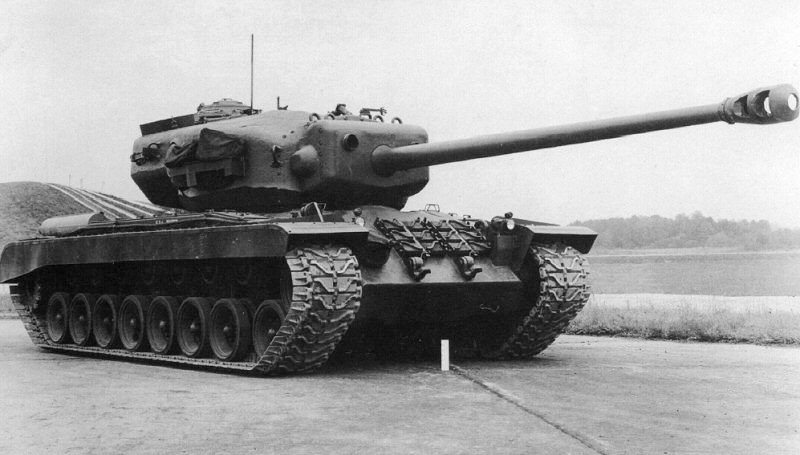
In regards to tank design, all countries involved in WWII learnt some brutal lessons, but none more so than those facing the Germans. Monstrous vehicles like the Tiger, King Tiger and Jagdtiger were virtually immune frontally to Allied tank weapons at the time, while simultaneously being able to destroy them from great distances. The appearance of these vehicles forced the Allies to desperately create their own designs to counter them, resulting in tanks like the M26 Pershing and IS2.
While these tanks fared much better against German tanks like the Tiger I, they were still not enough to handle to the King Tiger and especially the Jagdtiger tank destroyer. So the Allies were straight back to the drawing board to finally create a futureproof vehicle capable of dealing with any German armor thrown at them. The Soviet’s answer was with the IS-3 and the US’ was the T29 heavy tank.
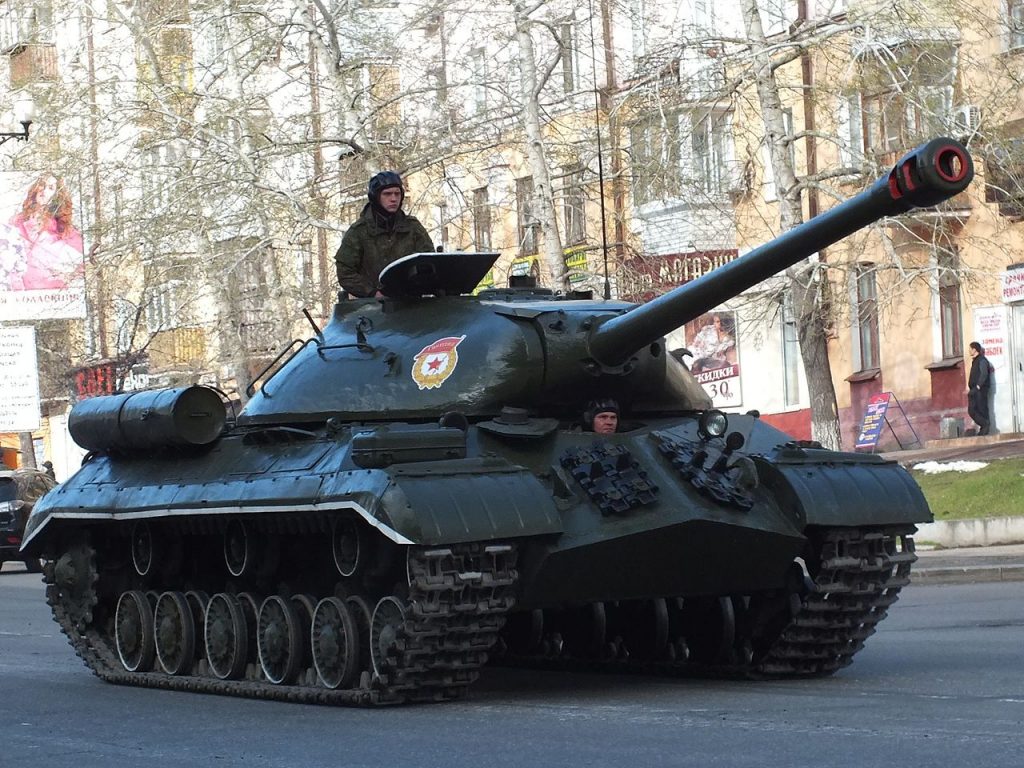
The T29 heavy tank project began in 1944, and from the start required the fitment of a high velocity 105 mm gun, and armor resistance to the 8.8 cm Kw.K.43 gun used in the Tiger II. The hull was based on that of the T26E2 (pilot model of the M26 Pershing), but significantly larger, using 8 roadwheels instead of 6. The frontal hull armor thickness remained the same as the Pershing (102 mm) but was much more angled, increasing its affective thickness to around 230 mm. The T29 used T80E3 tracks, similar to those used on the M26, but with Duckbill end connectors to increase track surface area.
It was powered by a Ford GAC engine at the rear. The GAC was a V12 version of the GAF v8 used in the M26 Pershing, and produced around 750 hp. This was mated to a General Motors cross-drive transmission, that was exceptionally easy for the driver to use, compared to contemporary designs. The co-driver also had drive controls, should he need them. Torsion bar suspension similar to the M26 Pershing was used. The tank could achieve a maximum of 22 mph, and a range of 100 miles.
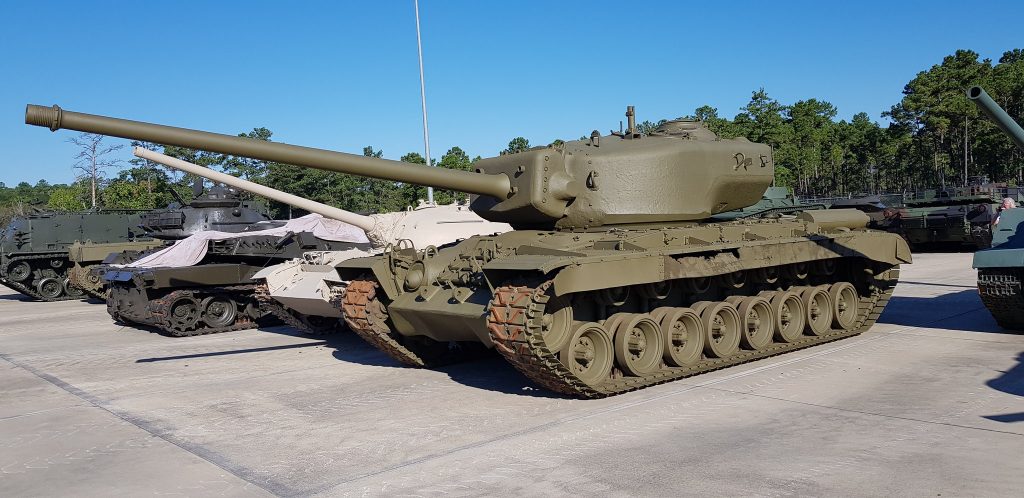
By far the most unique aspect of the T29 however, was its enormous turret. With over 200 mm on the gun mantlet, which goes down to 158 on the cheeks, 127 on the sides, and even 102 mm on the rear. Some areas of the turret front exceed 1 foot of armor. This turret armor would have provided incredible protection from incoming rounds. The huge 105 mm T5E1 L/65 gun could depress down to 10 degrees, and with the T29E3 tungsten cored round, it could penetrate 360 mm of armor at 450 meters, and 290 mm of armor at 1,830 meters. Due to two piece ammunition, the T29 could fire 6 rounds per minute.
The large turret contained 4 crew members; a gunner to right of the gun, two loaders, one on either side of the turret, and a commander located centrally at the rear of the turret. Two .50 caliber machine guns were mounted co-axially to the 105 mm.

Overall the T29 weighed 70 tons.
Early in the project, an idea was conceived to fit an early design T29 turret to the modified hull of an M6 heavy tank, in order to get the gun into action as a completed T29 was some time away. This resulted in the M6A2E1 heavy tank with a weight of 77 tons. General Eisenhower personally rejected the vehicle, stating its implacability made it useless.
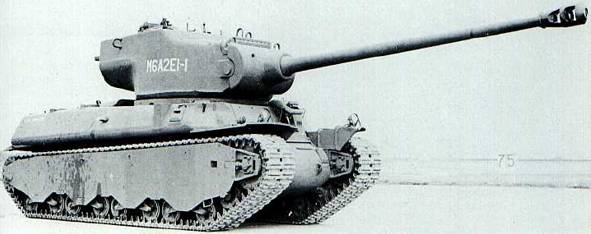
By March 1945, the US decided 1,200 were to be built, an amount reduced to 1,152 in April. The end of the war in Europe then slowed progress on the programme, but there was still hope it could participate in the inevitable invasion of Japan. However, with the dropping of the atomic bomb and Japan’s surrender, the order was cancelled completely, with only one completed T29 prototype built, and a second partly finished.
Meanwhile, the fearsome, pike-nosed Soviet IS-3 had reached production, but missed the final battles of WWII. The Soviets displayed their new toy at the 1945 Allied Victory parade in Berlin, where its appearance was a terrifying shock to western officials. With tensions between the East and the West rising, it was clear to the US that if they were to stand a chance against the Soviet’s newest tank designs, the venerable heavy would have to remain in the their arsenal.
The T29 programme would now serve as a research project for the development of future heavy tanks.
The T29 tanks were fitted with experimental equipment for testing, like the T29E1, which had a 5 mm longer hull than standard to allow the fitment of an Allison V1710–E32 V12 engine for trials. The T29E2 added hydraulically powered gun elevation and turret traverse, and a computing sight, developed by MIT. And the T29E3 saw the addition of a more advanced fire control system, and a stereoscopic range finder than gives this version the distinctive ‘ears’ on each side of the turret.
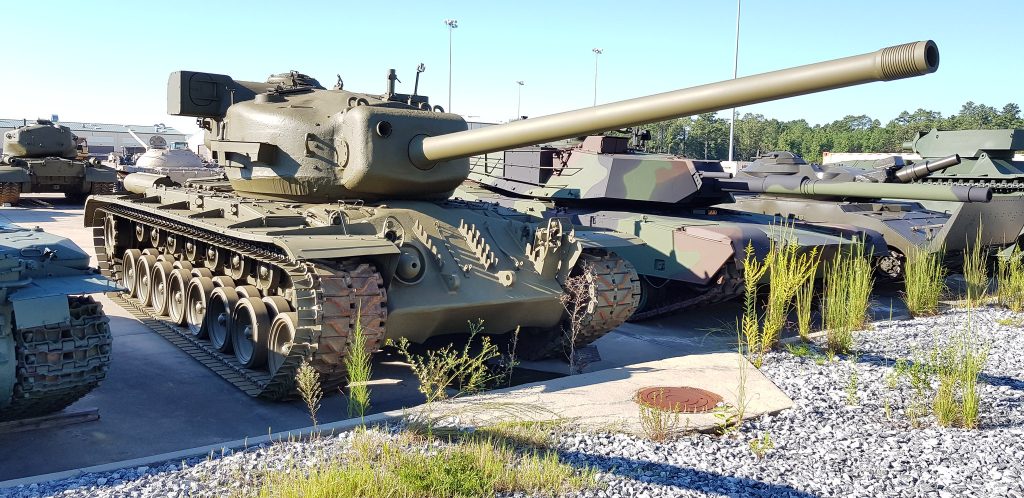
Alongside it, the US had been working on two other designs based on the T29 – the T30 and T34.
The T30 was almost identical to the T29, but had a huge 155 mm gun. The 155mm L/40 T7 gun had a low shell velocity of just 700 m/s, but could demolish tough fortifications, ones which were expected to be found in Japan and Europe. The gun was so huge that the shells alone weighed 43 kgs, and the breech had to be moved to a certain position to be loaded. The T30 was also powered by a Continental AV1790-3 V12 that produced 800 hp. This engine was trialled in the T30, and used in the M48 Patton much later on.
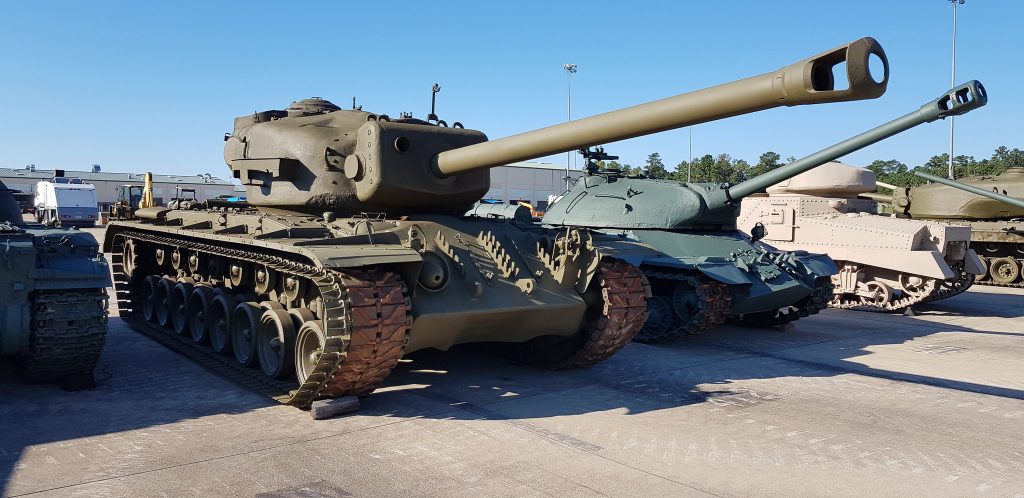
Only 3 T30s were built. One of them featured an automatic loading assist system, which positioned the gun and rammed in the round.
The T34 was the ultimate development of the T29. It used the 120 mm T53 L/60 rifled gun, an adaptation of the M1 anti-aircraft gun and an early form of the M58 gun used on the M103 heavy tank. This gun was a better middle ground between the T29 and T30. To counter the increased weight of the longer 120 mm gun, an additional 100 mm of armor plate was added to the rear of the T34’s turret.
While the T29, T30 and T34 would have proved to be a match for any tanks at the time, they also showed the US that perhaps the heavy tank was more of a problem than a solution. The huge size and weight meant they were a logistical nightmare, were unreliable, suffered from poor mobility and were too fuel-thirsty.
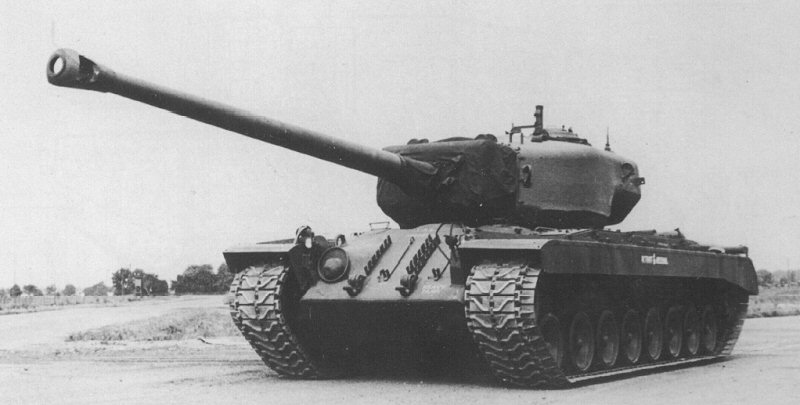
The T29 and its variant never saw combat, but they provided invaluable information for future tank designs. The T29 programme led into the M103 heavy tank, a vehicle that used much of the lessons learnt from the T29 family, and used a further development of the T34’s 120 mm gun.
Another Article From Us: Germany’s Deadly Little Tank Destroyer – the Hetzer
The T29 programme produced unique and special vehicles, that aren’t special just because they showed what should be, but also because they showed what shouldn’t be – including the heavy tank itself. The M103 would be the last heavy tank used by the US, replaced by the M48 Patton and M60, and the issues discovered in T29 programme contributed to the realisation that heavy tanks were becoming obsolete, and helped pave the way for the main battle tank.
